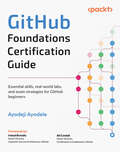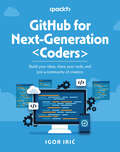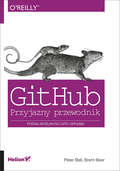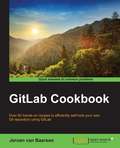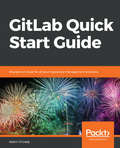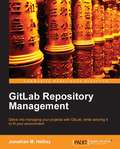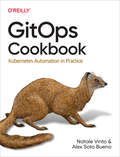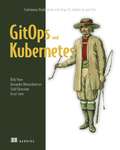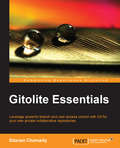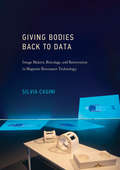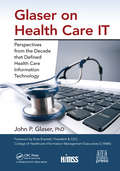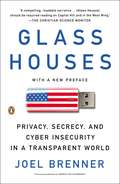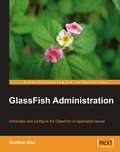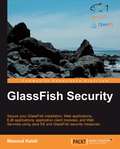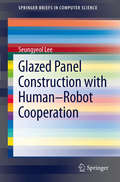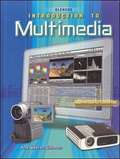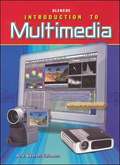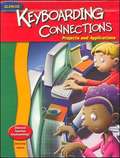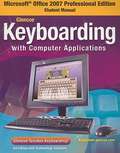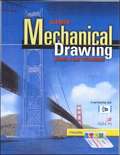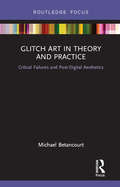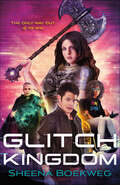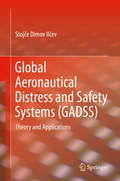- Table View
- List View
GitHub Foundations Certification Guide: Essential Skills, Real-World Labs, and Exam Strategies for GitHub Beginners
by Ayodeji AyodeleMaster Git and GitHub with this practical guide to version control, collaboration, and open-source contributions while preparing for the GitHub certification using mock exams and study tipsKey FeaturesBecome an expert in Git and GitHub for modern development—learn the fundamentals of version controlSolidify your learning using hands-on guides with real-world projects and self-assessment questionsPrepare for certification exam with practice questions, mock tests, and invaluable study tipsPurchase of the print or Kindle book includes a free PDF eBookBook DescriptionEmbark on a transformative journey with the GitHub Foundations Certification Guide, your go-to resource for mastering Git and GitHub. This comprehensive book takes you from the basics of version control to excelling at collaborative development. You'll learn how to use Git to accurately track and manage code changes, and discover why GitHub is the leading platform for collaboration, project management, and open-source development. Written by Ayodeji Ayodele, a Senior Customer Success Architect at GitHub with deep expertise in DevOps, Agile coaching, and software engineering, this book provides a structured path to Git/GitHub proficiency. Through hands-on tutorials, real-world projects, and self-assessment questions, you’ll harness the full potential of open source, navigate the GitHub platform with ease, employ advanced Git techniques, and gain practical code management skills. The book advances to explore secure collaboration, automation, and key features of the GitHub Desktop app. You’ll prepare for the certification exam with practice questions, mock exams, and invaluable study tips. By the end of this book, you’ll be prepared to take the GitHub Foundations exam and advance your developer career.What you will learnCreate and manage repositories on GitHub confidentlyCollaborate effectively using issues and pull requestsAdopt modern development practices using advanced GitHub featuresEnhance coding speed and quality with GitHub Copilot's AI suggestionsStreamline project management using GitHub ProjectsLeverage GitHub's capabilities to boost your career or grow your businessImplement best practices for GitHub privacy, security, and controlWho this book is forThis book is for software developers and engineers looking to master Git and GitHub for efficient code management, project collaboration, and streamlined workflows. Infrastructure engineers and system administrators will benefit from learning how to manage scripts and track infrastructure changes. Educators and trainers can use this guide to teach software development and prepare students for industry certifications. Aspiring developers and tech professionals will find it a valuable resource for building essential GitHub skills and advancing their software development careers.
GitHub for Next-Generation Coders: Build your ideas, share your code, and join a community of creators
by Igor IrićBuild a powerful portfolio on GitHub that showcases your most impressive coding projects and technical skillsKey FeaturesExplore GitHub's powerful features and make it the central hub for all your coding adventuresLearn how to use GitHub Copilot as your coding sidekick, suggesting lines of code to help you write faster and smarterLearn how to optimize and personalize your GitHub profiles for maximum impact from a community leaderPurchase of the print or Kindle book includes a free PDF eBookBook DescriptionNavigating the world of collaborative software development can be daunting, especially for young coders just starting their programming journey. This book is designed to take you on a coding adventure, transforming you from a curious beginner into a confident GitHub user. The book builds a solid foundation and explains the Git version control system in depth, helping you understand how to track changes, collaborate effectively, and manage your projects with ease. You'll master repositories, the building blocks of your coding projects, and learn branching strategies to experiment and work seamlessly with others. The chapters will teach you about GitHub Actions, guiding you through workflow syntax, exploring environments and secrets management, and providing hands-on exercises to solidify your understanding. You’ll also discover how to craft a compelling GitHub profile that highlights your achievements and discover the exciting world of open-source projects where you can contribute and give back to the community. To get you started with AI, you’ll also learn how to leverage Copilot and ChatGPT together to write faster, cleaner code. By the end of this book, you’ll be well prepared to contribute to real-world projects on GitHub, equipped with the skills to thrive in the world of collaborative software development.What you will learnTravel back in code history and track different versions of your projectsKeep your code blocks neat and tidy within your repository, just like sorting puzzle pieces to create a masterpieceCreate branches to experiment with new ideas or features without messing up your main codeUse Git to share your suggestions and collaborate with other coders to make your code even more amazingAutomate and level up your coding game with GitHub ActionsBuild your coder reputation by contributing to open source projectsWho this book is forThis book is for young, tech-curious individuals eager to find out more about the world of software development. If you are a student motivated to learn GitHub to better understand collaborative coding practices, manage projects effectively, and potentially pursue careers or hobbies in the technology field, then this book is for you.
GitHub. Przyjazny przewodnik: Przyjazny Przewodnik
by Peter Bell Brent BeerPoznaj mo?liwo?ci Gita i GitHuba!Git zrewolucjonizowa? ?wiat systemów kontroli wersji. Koncepcja rozproszonego systemu podbi?a serca programistów i ustanowi?a trendy na kolejna lata. Co powsta?o z po??czenia Gita i serwisu udost?pniaj?cego miejsce oraz narz?dzia dla programistów korzystaj?cych z Gita? To GitHub — najpopularniejsze miejsce w sieci, w którym znajdziesz tysi?ce projektów. GitHub wytycza dzi? ?cie?ki dla platform u?atwiaj?cych prac? z rozproszonymi systemami kontroli wersji.Ta ksi??ka zosta?a w ca?o?ci po?wi?cona w?a?nie GitHubowi. Si?gnij po ni? i przekonaj si?, jakie us?ugi oferuje ten serwis oraz jak wykorzysta? jego potencja? w Twoim projekcie. W trakcie lektury dowiesz si?, jak przegl?da? udost?pniony kod, wspó?pracowa? przy projektach oraz dostarcza? poprawki. Ponadto nauczysz si? zarz?dza? zg?oszonymi przez u?ytkowników problemami w Twoim kodzie oraz opanujesz najlepsze praktyki konfigurowania Twojego repozytorium. Na sam koniec poznasz narz?dzia przeznaczone dla systemów MacOS i Windows, a s?u??ce do wspó?pracy z serwisem GitHub. Ksi??ka ta jest obowi?zkow? lektur? dla wszystkich czytelników chc?cych w pe?ni wykorzysta? potencja? drzemi?cy w tym serwisie. Dowiedz si? jak i dlaczego ludzie u?ywaj? GitHuba do wspó?pracy. Przegl?daj bie??cy stan projektu — najnowsze zmiany, prace do wykonania i histori? poprawek. Twórz i edytuj pliki w GitHubie bez znajomo?ci systemu Git. Sugeruj zmiany w projektach, w których nie masz uprawnie? do bezpo?redniego wprowadzania poprawek. U?ywaj narz?dzi do obs?ugi problemów i zg?osze?, twórz ga??zie w celu definiowania nowych funkcji i wspólnej pracy nad zmianami. Twórz nowe repozytoria GitHuba, z uwzgl?dnieniem praw dost?pu do swojego projektuZaawansowany system kontroli wersji dla ka?dego!
GitLab Cookbook
by Jeroen Van BaarsenThis book is aimed at developers and devops that have a GitLab server running, and want to be sure they use it to its full potential. This book will also be useful for people looking for a great Git platform, and learn how to set it up successfully. Some system administrating experience on a UNIX-based system would be useful, but is not required.
GitLab Quick Start Guide: Migrate to GitLab for all your repository management solutions
by Adam O'GradyPort projects over from GitHub and convert SVN projects to GitLab hosted git projectsKey FeaturesEffective guide for GitLab migration from GitHub and SVNLearn to implement DevOps with GitLab 11Manage projects with issue boards and time trackingBook DescriptionGitlab is an open source repository management and version control toolkit with an enterprise offering. This book is the ideal guide to GitLab as a version control system (VCS), issue management tool, and a continuous integration platform.The book starts with an introduction to GitLab, a walkthrough of its features, and explores concepts such as version control systems, continuous integration, and continuous deployment. It then takes you through the process of downloading and installing a local copy of the on-premise version of GitLab in Ubuntu and/or CentOS.You will look at some common workflows associated with GitLab workflow and learn about project management in GitLab. You will see tools and techniques for migrating your code base from various version control systems such as GitHub and SVN to GitLab.By the end of the book, you will be using Gitlab for repository management, and be able to migrate projects from other VCSs to GitLab.What you will learnSet up CI and test builds for your projectsUnderstand the benefits and limitations of GitLab workflowMigrate from other common VCS platforms to GitlabCreate, review, and merge code changesLearn to branch local code and create a new branch in GitLabConfigure sequential stages and simultaneous stages for CI/CDAccess Mattermost for on-premise GitLabDiscover the issue tracking features of GitLabWho this book is forThe book is intended for the developers, SREs, and DevOps professionals who are looking for techniques to port their codebase to GitLab from GitHub or are looking to work with GitLab as their version control system of choice. If you've used other VCSs before, that will help with this book.
GitLab Repository Management
by Jonathan M. HetheyA simple, easy to understand tutorial guide on how to build teams and efficiently use version control, using GitLab.If you are a system administrator in a company that writes software or are in charge of an infrastructure, this book will show you the most important features of GitLab, including how to speed up the overall process
GitOps Cookbook: Kubernetes Automation in Practice
by Alex Soto Bueno Natale VintoWhy are so many companies adopting GitOps for their DevOps and cloud native strategy? This reliable framework is quickly becoming the standard method for deploying apps to Kubernetes. With this practical, developer-oriented book, DevOps engineers, developers, IT architects, and SREs will learn the most useful recipes and examples for following GitOps practices.Through their years of experience in application modernization, CI/CD, and automation, authors Alex Soto Bueno and Natale Vinto from Red Hat walk you through all the steps necessary for successful hands-on application development and deployment with GitOps. Once you start using the recipes in this book, you'll have a head start in development cycles on Kubernetes following the GitOps approach.You'll learn how to:Develop and deploy applications on KubernetesUnderstand the basics of CI/CD and automation on Kubernetes, and apply GitOps practices to implement development cycles on the platformPrepare the app for deployment on multiple environments and/or multiple Kubernetes clustersDeploy apps for either multiple environments using GitOps and Argo CD, or for Kubernetes clustersCreate Kubernetes-native pipelines with TektonProvide and extend DevOps skills for the team working on KubernetesUse progressive delivery to put your applications into production
GitOps and Kubernetes: Continuous Deployment with Argo CD, Jenkins X, and Flux
by Billy Yuen Alex Matyushentsev Jesse Suen Todd EkenstamGitOps and Kubernetes teaches you how to use Git and the GitOps methodology to manage a Kubernetes cluster.Summary GitOps and Kubernetes introduces a radical idea—managing your infrastructure with the same Git pull requests you use to manage your codebase. In this in-depth tutorial, you&’ll learn to operate infrastructures based on powerful-but-complex technologies such as Kubernetes with the same Git version control tools most developers use daily. With these GitOps techniques and best practices, you&’ll accelerate application development without compromising on security, easily roll back infrastructure changes, and seamlessly introduce new team members to your automation process. Purchase of the print book includes a free eBook in PDF, Kindle, and ePub formats from Manning Publications. About the technology With GitOps you use the Git version control system to organize and manage your infrastructure just like any other codebase. It&’s an excellent model for applications deployed as containers and pods on Kubernetes. About the book GitOps and Kubernetes teaches you how to use Git and the GitOps methodology to manage a Kubernetes cluster. The book interleaves theory with practice, presenting core Ops concepts alongside easy-to-implement techniques so you can put GitOps into action. Learn to develop pipelines that trace changes, roll back mistakes, and audit container deployment. What's inside Managing secrets the GitOps way Controlling access with Git, Kubernetes, and Pipeline Branching, namespaces, and configuration About the reader For developers and operations engineers familiar with continuous delivery, Git, and Kubernetes. About the author Billy Yuen, Alexander Matyushentsev, Todd Ekenstam, and Jesse Suen are principal engineers at Intuit. They are widely recognized for their work in GitOps for Kubernetes. Table of Contents PART 1 - BACKGROUND 1 Why GitOps? 2 Kubernetes & GitOps PART 2 - PATTERNS & PROCESSES 3 Environment Management 4 Pipelines 5 Deployment Strategies 6 Access Control & Security 7 Secrets 8 Observability PART 3 - TOOLS 9 Argo CD 10 Jenkins X 11 Flux
Gitolite Essentials
by Sitaram ChamartyThe book is written to suit an easy-reading style, using typical problems in access control to illustrate the need for each Gitolite feature explained. This book is for system administrators or development managers who need to keep a lid on Git-based development workflows. Basic knowledge of Git as well as of the Unix shell is helpful.
Giving Bodies Back to Data: Image Makers, Bricolage, and Reinvention in Magnetic Resonance Technology (Leonardo)
by Silvia CasiniAn examination of the bodily, situated aspects of data-visualization work, looking at visualization practices around the development of MRI technology.Our bodies are scanned, probed, imaged, sampled, and transformed into data by clinicians and technologists. In this book, Silvia Casini reveals the affective relations and materiality that turn data into image--and in so doing, gives bodies back to data. Opening the black box of MRI technology, Casini examines the bodily, situated aspects of visualization practices around the development of this technology. Reframing existing narratives of biomedical innovation, she emphasizes the important but often overlooked roles played by aesthetics, affectivity, and craft practice in medical visualization. Combining history, theory, laboratory ethnography, archival research, and collaborative art-science, Casini retrieves the multiple presences and agencies of bodies in data visualization, mapping the traces of scientists' body work and embodied imagination. She presents an in-depth ethnographic study of MRI development at the University of Aberdeen's biomedical physics laboratory, from the construction of the first whole-body scanner for clinical purposes through the evolution of the FFC-MRI. Going beyond her original focus on MRI, she analyzes a selection of neuroscience- or biomedicine-inspired interventions by artists in media ranging from sculpture to virtual reality. Finally, she presents a methodology for designing and carrying out small-scale art-science projects, describing a collaboration that she herself arranged, highlighting the relational and aesthetic-laden character of data that are the product of craftsmanship and affective labor at the laboratory bench.
Gizmos or: How Digital Devices Have Transformed American Character And Culture
by Arthur BergerGizmos or: The Electronic Imperative offers a concise series of analyses on the transformative impact of digital devices on American society. With approaches ranging from semiotic theory to psychoanalytic theory, sociological theory to personal reflection, Berger taps the span of knowledge from his prolific career to help readers better understand the role digital devices play both in their technologic, economic, and common-use forms. Using accessible, conversational language and numerous illustrations, Berger deconstructs familiar objects and media for readers ranging from field specialists to everyday cultural consumers alike.
Glaser on Health Care IT: Perspectives from the Decade that Defined Health Care Information Technology (HIMSS Book Series)
by John P. GlaserJohn Glaser has been an astute observer and recognized leader in the health care industry for over thirty years. He has written a regular column for Hospitals & Health Networks in which he comments on a wide range of topics, including improving organizational performance through health information technology (HIT), changes in HIT architecture, challenges in leveraging data, and the evolution of the role of IT leadership. Glaser on Health Care IT: Perspectives from the Decade that Defined Health Care Information Technology is a collection of some of the most widely read articles that have been published in H&HN Daily, H&HN Weekly, and Most Wired Online in the past decade (2005–2015). The columns are dated to show their original publication dates, and the material is organized into four broad themes: HIT Applications and Analytics Challenges Improving Organizational Performance through HIT IT Management Challenges HIT Industry Observations Each section offers readers an intimate look at the myriad issues associated with getting IT "right" and the organizational performance gains that can be achieved in doing so. Moreover, the book examines the power and potential of the technologies available to health care providers today, as well as the transformative nature of those we have yet to fully embrace.From seasoned CIOs and consultants to software developers and nurses, this book provides invaluable insights and guidance to all those seeking to make the delivery of care safer, more effective, and more efficient through the application of health care IT.Foreword by Russ Branzell, President and CEO, College of Healthcare Information Management Executives (CHIME) Co-published with Health Forum, Inc.
Glass Houses
by Joel BrennerA chilling and revelatory appraisal of the new faces of espionage and warfare on the digital battleground Shortly after 9/11, Joel Brenner entered the inner sanctum of American espionage, first as the inspector general of the National Security Agency, then as the head of counterintelligence for the director of National Intelligence. He saw at close range the battleground on which adversaries are attacking us: cyberspace. Like the rest of us, governments and corporations inhabit "glass houses,” all but transparent to a new generation of spies who operate remotely from such places as China, the Middle East, Russia, and even France. In this urgent wake-up call, Brenner draws on his extraordinary background to show what we can-and cannot-do to prevent cyber spies and hackers from compromising our security and stealing our latest technology. .
GlassFish Administration
by Xuekun KouThis book provides an in-depth tutorial on administering the GlassFish application server. Every chapter starts with a clear discussion of the involved concepts, followed by step-by-step instructions on how to perform the administrative task. Clear illustrations and complete working code examples are used to help you visualize the relevant topics. If you are a Java EE application developer and architect who builds and deploys Java EE, Ruby on Rails, and other supported applications for the GlassFish Application Server, then this book is for you. This book is also very valuable if you are an administrator responsible for maintaining the GlassFish Server runtime. Basic knowledge of Java EE 5 is assumed but you need not have any previous knowledge of GlassFish. Those who already know the basics of GlassFish will still find this book useful as they will gain knowledge of administration tasks.
GlassFish Security
by Masoud KalaliSecurity is driven by requirement and design and we implement security on the basis of the requirements provided by analysts. In this book, we take a programmatic approach to understand Java EE and GlassFish security. You will find plenty of code samples in this book. It is easy to secure your application when you have a demonstration of a complete and working application explained in the book, isn't it? Each chapter starts with the importance and relevance of the topic by introducing some Java EE applications requirement, which will encourage you to read it further. This book is for application designers, developers and administrators who work with GlassFish and are keen to understand Java EE and GlassFish security. To take full advantage of this book, you need to be familiar with Java EE and GlassFish application servers. You will love this book if you are looking for a book that covers Java EE security and using GlassFish features to create secure Java EE applications, or to secure the GlassFish installation and operating environment and using OpenSSO.
Glazed Panel Construction with Human-Robot Cooperation
by Seungyeol LeeThese days, construction companies are beginning to be concerned about a potential labor shortage by demographic changes and an aging construction work force. Also, an improvement in construction safety could not only reduce accidents but also decrease the cost of the construction, and is therefore one of the imperative goals of the construction industry. These challenges correspond to the potential for Automation and Robotics in Construction as one of solutions. Almost half of construction work is said to be material handling and materials used for construction are heavy and bulky for humans. To date, various types of robots have been developed for glazed panel construction. Through the case studies on construction, to which the robots were applied, however, we identified difficulties to be overcome. In this study, a human-robot cooperative system is deduced as one approach to surmount these difficulties; then, considerations on interactions among the operator, robot and environment are applied to design of the system controller. The human-robot cooperative system can cope with various and construction environments through real-time interaction with a human, robot and construction environment simultaneously. The physical power of a robot system helps a human to handle heavy construction materials with a relatively scaled-down load. Also, a human can feel and respond to the force reflected from robot end effecter acting with working environment. Through the experiments and mock-up tests with a prototype robot, we observe the characteristics of the power assist and the force reflection, the merits of the human-robot cooperation system. To apply human-robot cooperative system at real construction sites, Glazed Ceiling Panel Construction Robot is developed for the first time. This robot is distinguished from other glazed panel construction robots because of the methods of lifting the panel to high installation positions and installing the fragile and bulk panel with robot force control. After applying to real construction sites, evaluation on the productivity of the developed robot was done by comparing and analyzing with the existing installation methods.
Glencoe Introduction To Multimedia
by Ana Weston SolomonIntroduction to Multimedia is designed to help you become a skilled and creative user of current multimedia technology. The purpose of this course is to increase your understanding of multimedia concepts and techniques. You are the reason that this textbook was written. Multimedia is a vast and exciting domain.
Glencoe Introduction to Multimedia
by Ana Weston SolomonThis complete guide describes types of multimedia productions, how multimedia affects society, and the components and tools that are used to produce a multimedia product. Independent and collaborative exercises promote an interactive learning environment within a project-based framework.
Glencoe Keyboarding Connections: Projects and Applications
by Julie Jaehne Arlene ZimmerlyStudents will learn keyboarding and complete numerous hands-on projects related to word processing, desktop publishing, presentation software, spreadsheets, and databases. The text was written for middle school students. All activities and projects are age-appropriate. Keyboarding Connections features a "fun" format complemented by a visually appealing game-like software interface. High-interest skill building exercises, applications, and games consistently hold students' attention. All new content includes extensive practice with e-mail, PowerPoint®, and Web page design. An Internet Connection feature provides search tips and relevant links. A user-friendly Web site features include State correlations, language arts activities, and additional teacher resources. Plus, everything is Windows 2000 and XP compatible!
Glencoe Keyboarding with Computer Applications
by McGraw-HillMicrosoft Word 2007 is a powerful word processing program. Using this program, you can create documents that contain tables, artwork, and decorative fonts.
Glencoe Mechanical Drawing: Board and CAD Techniques
by Glencoe McGraw-Hill StaffProject-based learning prepares students for professional certification with Glencoe Mechanical Drawing: Board and CAD Techniques! Endorsed by the American Design Drafting Association (ADDA), this text includes Prep for ADDA activities. Step-by-step applications, design problems, and drafting problems prepare students for professional excellence and certification. Project-based learning is supported with unit-based projects that integrate technical math and culminate in Build Your Portfolio activities. Help your students get ready for competitive events like the TSA and SkillsUSA with prep activities embedded throughout the content and end-of-chapter assessments. Rigorous academic content is supported, with a special emphasis on math, geometry, and science, with STEM activities. Point-of-use correlations ease possible academic credit application. Extra activities in the Student Edition and workbook help you meet Perkins mandates. The appendix features Math (including algebra and geometry), abbreviations and symbols, pipe symbols, and reference tables (ASME, ANSI, ISO).
Glide-Symmetric Z2 Magnetic Topological Crystalline Insulators (Springer Theses)
by Heejae KimThis book presents a comprehensive theory on glide-symmetric topological crystalline insulators. Beginning with developing a theory of topological phase transitions between a topological and trivial phase, it derives a formula for topological invariance in a glide-symmetric topological phase when inversion symmetry is added into a system. It also shows that the addition of inversion symmetry drastically simplifies the formula, providing insights into this topological phase, and proposes potential implementations. Lastly, based on the above results, the author establishes a way to design topological photonic crystals. Allowing readers to gain a comprehensive understanding of the glide-symmetric topological crystalline insulators, the book offers a way to produce such a topological phase in various physical systems, such as electronic and photonic systems, in the future.
Glitch Art in Theory and Practice: Critical Failures and Post-Digital Aesthetics
by Michael BetancourtGlitch Art in Theory and Practice: Critical Failures and Post-Digital Aesthetics explores the concept of "glitch" alongside contemporary digital political economy to develop a general theory of critical media using glitch as a case study and model, focusing specifically on examples of digital art and aesthetics. While prior literature on glitch practice in visual arts has been divided between historical discussions and social-political analyses, this work provides a rigorous, contemporary theoretical foundation and framework.
Glitch Kingdom
by Sheena BoekwegThe teenage daughter of an executioner and the traitorous prince she can’t kill must reluctantly join forces to dethrone a paranoid queen after discovering they are trapped in a video game in Sheena Boekweg's fast-paced YA debut, Glitch Kingdom...Ryo was the golden boy, the prankster prince, but with one stroke of a pen he has lost everything. Dagney and Grigfen were happy as minor members of the court, but when their father, the king's executioner, is branded a traitor, they each must deal in death in order to survive.. McKenna, queen of the enemy realm, has inherited a mission of conquest by assassination, but worries she's not up to the role. But behind the crowns and masks hides a secret… All of these teens are actually players in the newest, shiniest, most immersive virtual reality video game, competing against each other for a highly coveted internship with a prestigious game developer. But now this life-changing opportunity has suddenly become a deadly trap. A glitch in the software has locked the players inside the game, and they’ll need to escape before the fantasy world corrupts around them. The only way out is to win.
Global Aeronautical Distress and Safety Systems (GADSS): Theory and Applications
by Stojče Dimov IlčevThis book presents the principal structure, networks and applications of the Global Aeronautical Distress and Safety System (GADSS) for enhanced airborne Communication, Navigation and Surveillance (CNS). It shows how their implementation works to ensure better security in flight and on the airports surface; improved aircraft tracking and determination in real space and time; and enhanced distress alerting, safety; and Search and Rescue (SAR) system for missing, hijacked and landed aircraft at sea or on the ground. Main topics of this book are as follows: an overview of radio and satellite systems with retrospective to aeronautical safety; security and distress systems; space segment with all aspects regarding satellite orbits and infrastructures; transmission segment of radio and satellite systems; ground segment of radio and earth ground stations; airborne radio and satellite antenna systems and propagation; aeronautical VHF and HF Radio CNS systems and networks; Inmarsat, Iridium and Cospas-Sasrast aeronautical satellite CNS systems and networks; Aeronautical Global Satellite Augmentation System (GSAS) and networks; Digital Video Broadcasting - Return Channel via Satellite (DVB-RCS) standards and Aeronautical Stratospheric Platform Systems (SPS) and networks.
